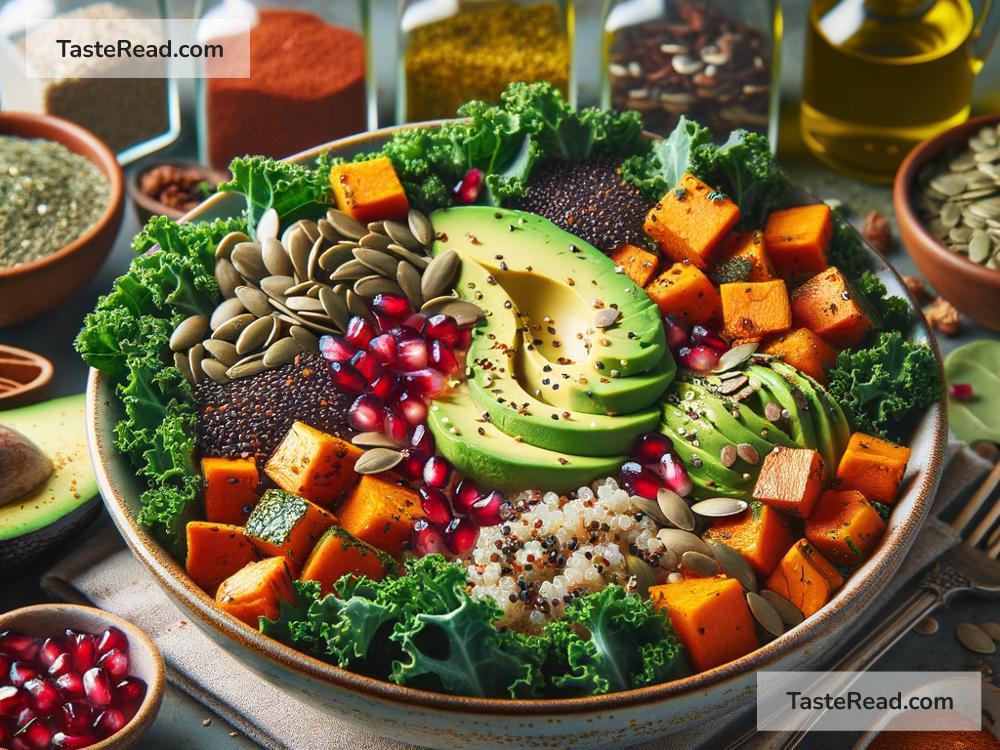The Science of Nutrient Interaction: How Nutrients Work Together in Your Body
Have you ever thought about how the food you eat helps your body stay healthy? Many of us know that vitamins, minerals, proteins, fats, and carbohydrates are important for our health. But did you know that these nutrients work together like a team to make sure your body functions properly? This process is called “nutrient interaction,” and understanding it can help you make better choices about what to eat.
In this article, we’ll explore the fascinating science behind nutrient interaction in simple terms. You’ll learn why some nutrients need each other to work, how they help your body stay strong, and how eating the right combinations of foods can enhance your health.
What Is Nutrient Interaction?
Nutrient interaction is the way vitamins, minerals, and other nutrients team up to support your body. Think of them as coworkers in an office: each nutrient has a specific job, but if they work together, they can get even more done.
For example, calcium is essential for strong bones, but your body can’t absorb calcium effectively without vitamin D. In this case, vitamin D acts like a helper, bringing calcium into your bloodstream so it can reach your bones.
Similarly, iron is vital for carrying oxygen in your blood, but it absorbs better when paired with vitamin C. That’s why combining foods rich in both nutrients—like spinach (iron) and oranges (vitamin C)—can maximize their benefits.
Why Do Nutrients Need Each Other?
Nutrients interact because your body is a highly interconnected system. It doesn’t process nutrients in isolation. Instead, enzymes, hormones, and other biological processes work together to make sure that nutrients are absorbed, transported, and used where they’re needed.
Here are a few examples of nutrient interactions:
1. Vitamins Helping Vitamins
Some vitamins rely on each other to work. For instance, vitamin E helps protect vitamin A from breaking down in your body. Both are antioxidants, meaning they help fight off harmful substances called free radicals that can damage your cells.
2. Minerals Working Together
Certain minerals also interact. Magnesium and potassium, for example, work together to maintain healthy muscles and nerves. Magnesium helps your body regulate potassium levels, which are needed for proper muscle contractions and a steady heartbeat.
3. Macronutrients and Micronutrients
Macronutrients like proteins, fats, and carbohydrates give your body energy. But they need help from micronutrients—like vitamins and minerals—to be processed. For example, vitamin B helps your body break down carbohydrates into energy, while magnesium is vital for processing proteins.
The Benefits of Proper Nutrient Interaction
When nutrients work together effectively, your body enjoys many benefits:
-
Stronger Bones and Teeth
The combination of calcium, phosphorus, and vitamin D supports healthy bones and teeth. These nutrients strengthen your skeleton and make you less likely to suffer from fractures. -
Better Immune System
Vitamins C, A, and D work in harmony to keep your immune system strong. They help your body fight off infections and repair damaged cells. -
Improved Energy Levels
Iron, vitamin B6, and vitamin B12 help your body create red blood cells, which transport oxygen to your tissues. More oxygen means more energy to fuel your daily activities. -
Enhanced Digestion
Fiber (found in fruits, vegetables, and grains) works with water and magnesium to keep your digestive system running smoothly. Together, they help prevent constipation and promote gut health.
Common Food Combinations for Better Nutrient Interaction
How can you take advantage of nutrient interaction in your meals? Try pairing foods that complement each other nutritionally. Here are some ideas:
1. Spinach and Citrus Fruits
Spinach is rich in iron, but iron needs vitamin C for better absorption. Pair spinach with a squeeze of lemon or an orange salad for a nutrient-packed meal.
2. Salmon and Broccoli
Salmon is a great source of vitamin D, while broccoli contains calcium. Eating them together can maximize their benefits for bone health.
3. Whole Grains and Beans
Whole grains contain magnesium, and beans are rich in potassium. These nutrients work together to support muscle and nerve function.
4. Avocado and Tomatoes
Tomatoes are high in vitamin C, and avocados provide healthy fats that help absorb vitamins like A, D, E, and K. Together, they make a delicious and nutritious combo.
What Happens When Nutrient Interaction Doesn’t Work?
If certain nutrients are missing or not working well together, your body can face problems, such as:
- Weak Immune System: Without proper interaction between vitamins and minerals, your body might struggle to fight off infections.
- Low Energy: Poor nutrient absorption can leave you feeling tired and sluggish.
- Bone Issues: A lack of calcium and vitamin D can lead to weaker bones.
That’s why eating a balanced diet with a variety of foods is so important.
Final Thoughts
The science of nutrient interaction shows us how our bodies depend on teamwork—not just between organs and cells, but between the nutrients we consume. By understanding how nutrients interact, you can make smarter food choices that boost your health.
Next time you’re planning a meal, think about how different ingredients can work together to help your body thrive. Nutrients are your allies in staying healthy, so fuel your body with the combinations it needs to perform at its best.
Remember: eating a variety of foods isn’t just about taste—it’s about giving your body the tools it needs to work like the amazing machine it is!


